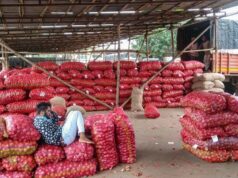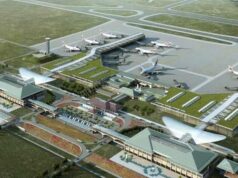Ordnance Factory Raising Day Revisiting the essence of Ordnance Behemoths
By Col Satish Singh Lalotra
‘Keep your powder Dry’—Anonymous
A country of India’s size that qualifies a little less than a continent, sitting at the cross roads of two ancient civilizations ( read Chinese & Indus valley ) , sharing an international boundary of approximately 15,000 kms & surrounded with countries inimical to India’s interest had prompted our colonial masters to establish an organization that could act as a bulwark against a threat to their hegemony. Thus sprang all over the country a maze of ordnance factories situated from the sea coast of Orissa -Bengal to the Vidharbha region of Maharashtra right up till the deep jungles of (‘Central provinces’) today’s Madhya Pradesh. Though physically the first foot print of an ordnance factory was established in 1712 by the ‘Dutch Ostend company’s gun powder factory’ at Ichhapur near Calcutta it was only on 18th March 1801 that the establishment of India’s first so called ‘Gun carriage factory’ at ‘Cossipore’ near present day Kolkata is taken as the ‘standard- bearer’ or raising day of our ordnance factories in the country. The brief time line of establishment of ordnance factories till the formation of OFB (Ordnance factory board) is as under-
* 1712-Establishment of the Dutch Ostend company’s gun powder factory at Ichhapur.
* 1775 —Establishment of the board of ordnance at ‘Fort William’, Kolkata.
* 1787 — Establishment of the Gun powder factory at Ichhapore.
* 1791 –Production of Gun powder begins at Ichhapore.
* 1801 –Establishment of Gun carriage factory at Cossipore.( Raising day)
* 1802 —Production begins at Cossipore.
* 1935 — Indian ordnance service (IOS) was introduced to administer the whole defence production of India.
* 1954 — Indian ordnance services (IOS) renamed to IOFS (Indian ordnance factories services.
* 1979 — OFB (ordnance factory board) is established on 02 April.
* 2021— Restructuring of OFB into 7 DPSUs ( Defence public sector undertakings)
From 01 October 2021, OFB has been dissolved and all management, control, operations, and maintenance has been transferred to 7 newly DPSUs as under–
* AWE-Advanced weapons and equipment India limited.
* AVANI-Armoured vehicles Nigam limited.
* GIL-Gliders India limited.
* IOL — India optel limited
* MIL—Munitions india limited
* TCL-Troops comforts limited.
* YIL-Yantra india limited.
These new companies were launched and dedicated to the nation on 15th October 2021. But again these are being restructured in 2024, as the Government is mulling to merge them since the output of one factory serves as the input of the other. The day of 18th March is celebrated every year as mentioned above -‘Ordnance factory day’ firstly to commemorate the day as the ground-breaking one when on the same day in 1801 the GCF Cossipore was established and secondly to honour the contribution of the IOFs( Indian ordnance factories) in strengthening the country’s defence capabilities. The IOFs are a group of 41 manufacturing units across the country, which are responsible for the production of arms, ammunition and other equipment for the Indian armed forces. These factories play an important role in ensuring the security of the country by providing high -quality weapons and equipment to the armed forces of India. On this day various programmes and events are organized by the IOFs to showcase their achievements, advancements, in technology and capabilities. The aim of writing this piece of mine has been twofold-firstly to renew my old ties with this organization while serving with the DGQA ( Dte Gen of quality assurance) and secondly to implore and explore the possibility via this effort of mine to put a word of advice if the government of the day could establish few ordnance units in the UT of Jammu and Kashmir as a measure of industrialization. I have had the good fortune to visit, interact and be a part of several ordnance factories while posted for 5 years in the country’s premier quality assurance organization i.e DGQA that acted as a watchdog for all things manufactured by these factories as part of QA (Quality assurance) activities and hence know to an extent their work culture and ethos.
With the changed Geo-political situation in the northern most part of our country as a consequence to the abrogation of article 370, an appreciable reduction of militancy, a big boost in the rail, road and other basic infra infused by the single-minded dedication of the present dispensation; it stands to logic that the next step to assuage the feelings of the masses of J&K is to integrate them into the mainstream of national progress by partaking them in the reconstruction business. Though in the past many efforts have been undertaken to attract the best of business minds and their financial acumen in giving a heft to the economic upturn of the erstwhile state of Jammu & Kashmir, the progress has been marred by a very cautious approach as far as investment of money is concerned. May be the private investors are still being fence sitters just waiting for the entire ecosystem of financial investment to pick up speed in Jammu and Kashmir. It is but natural that the so called big push in financial investment can come only from the public sector undertakings which have a bigger and longer gestation period to fructify. Moreover the PSUs, that too the DPSUs bring with them attendant paraphernalia of security and the so called ‘Economy of scale’ which have within themselves a bigger potential for absorption of manpower and ancillary services afforded from the local areas as such. Though the UT of Jammu & Kashmir has many government and non-governmental sponsored programmes for the up lifting of the youth such as the ‘Himayat’ and JKYDF ( Jammu and Kashmir youth development forum) working in the field of education and literacy, environment and natural resource, vocational training , women’s development and empowerment etc ,they are not mass employers by their very nature.
A cursory look at the historical perspective of establishment of various ordnance factories in the country will underscore the following as far as their locational and other viewpoints were concerned–
* A very wide spread rate of unemployment in the given area.
* Very less rate of industrialization obtaining in the area owing to multifarious reasons that could range from lack of rail, road and local resources to socio-politico undertones plaguing the region.
* A regional imbalance in the area that was direct fallout of politico-socio combo from ages.
* A skewed sense of affinity in partaking of national reconstruction imposed by extraneous factors of naxalism and Maoism.
* Hijacking of local agenda by a powerful few taking advantage of tribal population and keeping them ignorant of their rights.
* Stopping the exodus of cheap labour to neigbouring states and union territories in the area.
* Stepping up the idea of ‘Economy of scale’ and consequent security apparatus in the area by establishment of these DPSUs.
* Correcting the regional imbalance in the area that had even escaped the efforts of various ‘Financial commissions’ of India in the past.
* Instilling a sense of financial and regional inclusion in the marginalized sections of such areas.
* Improving the overall standard of life of the area.
A rundown of various ordnance factories established in the past would indicate to us that a vast majority of them were built around places taking the above terms of reference into consideration that justified their selection even to this day. Locations like Bhandara, Chandrapur, Ambhajari , Varangaon, Bhusawal etc in Maharashtra and Itarsi in MP , Bloangir in Odhisa ,Arvankadu in TN etc had a preponderance of tribal population, backwardness, illiteracy, illness , malnutrition rampant. The combination of the above led these places to be typical laggards in the national development index dragging the country’s economic scenario from dismal to bleak. The various 5 Year development planning from Nehruvian days laid the keel of establishment of these ordnance factories with the separate department of defence production calling shots. It is felt that a similar professional approach has to be applied to the UT of J&K to lift it from the morass of inactivity and regional imbalance that it has slipped into, abrogation of article 370 notwithstanding. Various detractors to my above quoted views may cite the close proximity of Jammu and Kashmir to the border areas as most unsuitable and may queer the pitch as such. But I am of the considered opinion that the establishment of few ordnance units in the UT could actually act as an impetus to the working class people in these units since they would be located in the same area as are the field formations of the Indian army and an eye witness to the efficacy of their produce in the hands of the so called ‘First responders’ to a national emergency.
As far as the location and type of these ordnance units are concerned they could be located at the following places in the UT of J&K-
* Bhaderwah/ Kishtwar– OPTEL (OPTICAL INSTRUMENTS) due to its salubrious environs as found in DEHRADUN where the present OPTEL DPSU is located. Bhaderwah could also act as an alternative to Kashmir if ever the situation goes from bad to worse in that area.
* Dhar road area near Udhampur – OPTEL and store DPSU which can act as a confluence to Samba and Kathua both in terms of manpower and local resources.
In fact India should draw a lesson from its western adversary, Pakistan which doesn’t have any qualms in establishing its nuclear power plant at Kahuta which is just a stone’s throw away from the LC. Some may say that Pakistan is hamstrung by its lack of strategic depth to force its strategic assets deployment near the LC. Contrary to the above, my article only suggests establishment of a few DPSUs in the UT that can easily pass off as a means of employment generation and its consequent windfall in terms of national integration. Time to recalibrate our national perspective in such matters and also to keep our powder dry…




